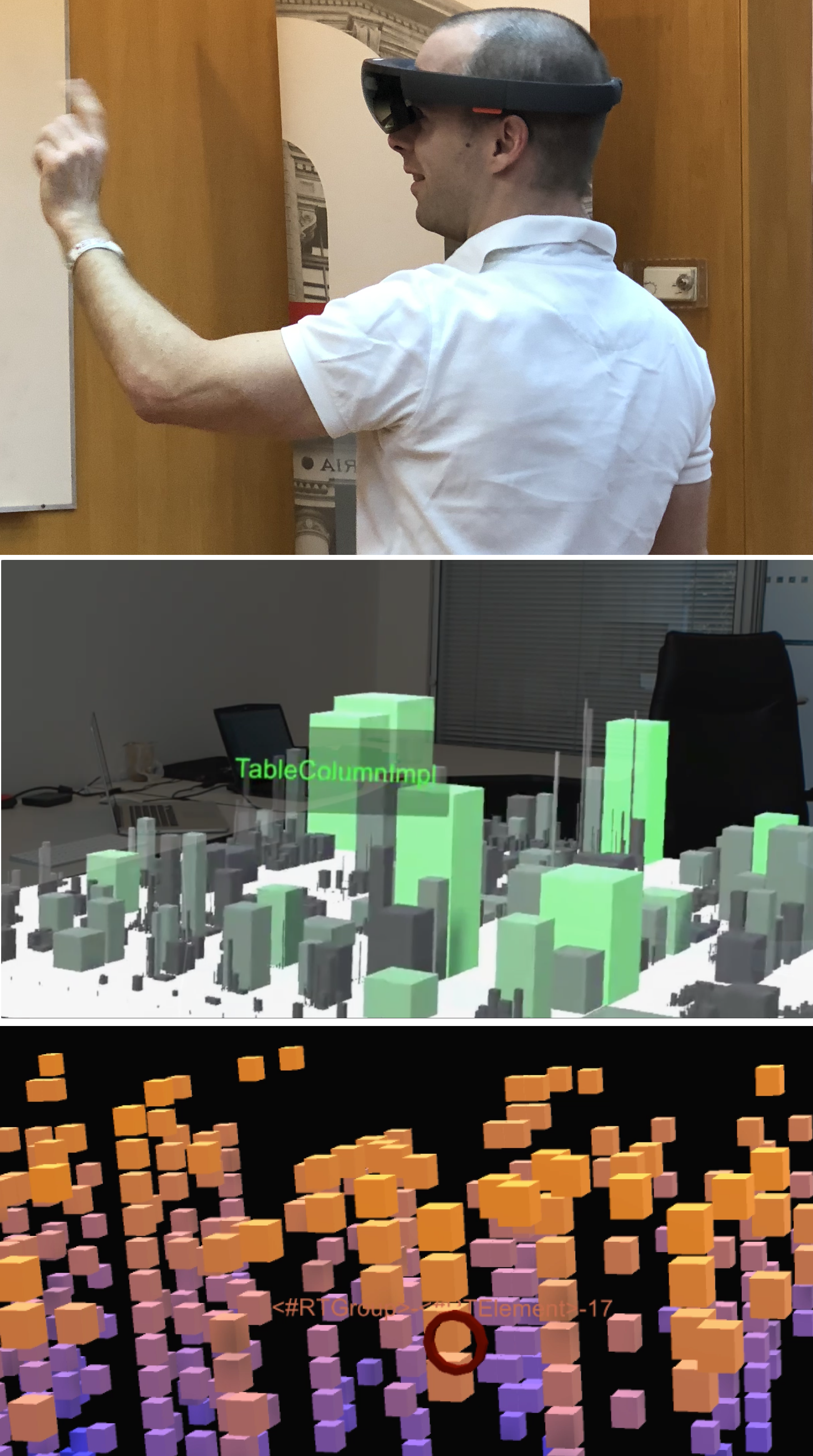Overcoming Issues of 3D Software Visualization through Immersive Augmented Reality
Although several usability issues affect 3D visualizations (i.e., navigation, occlusion, selection, and text readability), only a few visualizations have been proposed to support developers on software engineering tasks. We observe that most 3D software visualizations are displayed on a standard computer screen, and hypothesize that displaying them with immersive augmented reality can help to (i) overcome usability issues of 3D visualizations, and (ii) increase their effectiveness to support software concerns. We investigate our hypothesis via a controlled experiment. In it, nine participants use 3D city visualizations displayed on a Microsoft HoloLens device to complete a set of software comprehension tasks. We further investigate our conjectures through an observational user study, in which the same participants of the experiment use a space-time cube visualization to analyze program executions. We collect data to (1) quantitatively analyze the effectiveness of visualizations in terms of user performance (i.e., completion time, correctness, and recollection), and user experience (i.e., difficulty, and emotions); and (2) qualitatively analyze how immersive augmented reality helps to overcome the limitations of 3D visualizations. We found that immersive augmented reality facilitates navigation and reduces occlusion, while performance is adequate, and developers obtain an outstanding experience. Selection and text readability still remain open issues.
Source code: 3D City visualization (Unity)
